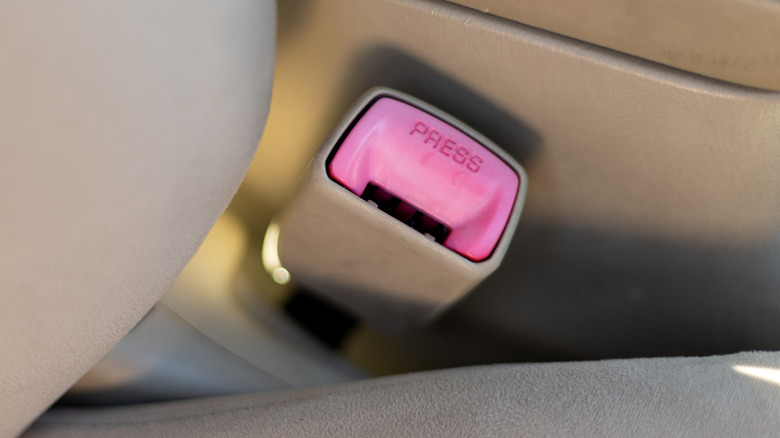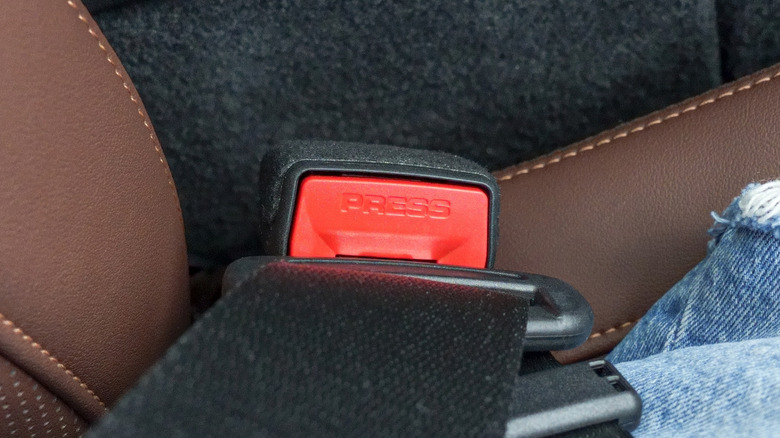What Is The Velcro On Seat Belt Clips For?
Seatbelts are some of the simplest mechanisms found in a car, ultimately just strips of fabric with a buckle and clip at one end. So why do so many of them also have an extraneous fabric loop? Or what about that weird little button of plastic punched into the middle of the strap?
The explanations are fairly straightforward (the fabric loop gives extra room in the event of a crash, and the button keeps the belt from retracting too far). But what about those little strips of Velcro-like material found on one side of the belt clips on both the driver and front passenger assemblies?
Sticking a piece of Velcro or even felt onto one side of a seatbelt clip seems like such a bizarre practice, and yet it's gotten to be fairly common in modern vehicles, and even rental cars. There's never an accompanying piece of Velcro for these strips to stick to, or any seatbelt accessories meant to attach to them. So why do they keep appearing?
It's simple, really
Finding official manufacturer statements on this particular design decision is difficult, but there is a consensus among drivers and enthusiasts alike. From Reddit to the Rivian Forums and the Jeep Cherokee Club to Mini 2, regardless of whether it's a smart seatbelt or a regular old mechanical one, the alleged answer is very simple: Padding.
More specifically, adhering soft material — like the squishier side of Velcro or some felt — to the side of the seat belt clip will cushion impacts as the buckle rattles around while the vehicle is in motion. This cuts down on the noise you might otherwise hear as it bounces against the center console, which is usually made out of the same plastic material the buckle is encased in.
That little strip also reduces, if not outright prevents, surface damage to either the buckle or console. While the absence of buckle padding wouldn't cause performance-impacting issues, using it does keep that area of the interior looking fresh and new much longer.

